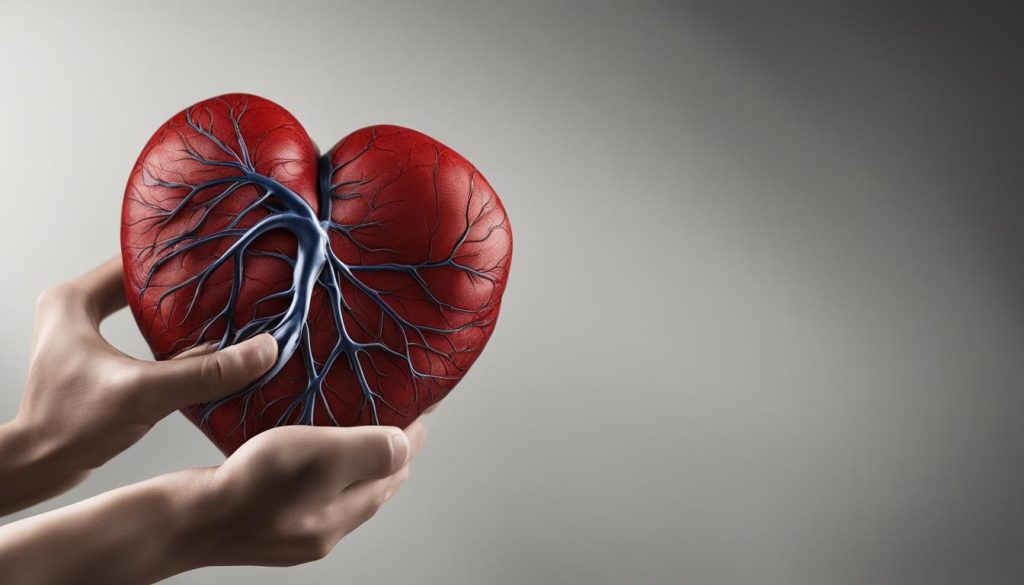Our hands hold more than just the power to grasp, touch, and manipulate objects. They can also reveal important insights into our overall health. Hand analysis, also known as hand reading or hand diagnosis, is a fascinating study that explores the connection between the characteristics of our hands and potential health conditions. From the length of our fingers to the color of our nails, these unique features can serve as early indicators of various health issues.
Let’s delve into the intriguing world of hand analysis and discover how our hands can provide valuable clues about our well-being. Join me on this journey as we explore the secrets that lie within our hands and learn about the potential health conditions they can predict.
Health Conditions Your Hands Can Predict
- Hand analysis, also known as hand reading or hand diagnosis, explores the connection between the characteristics of our hands and potential health conditions.
- From the length of our fingers to the color of our nails, our hands hold valuable clues about our overall health.
- Various indicators in our hands can predict the risk of developing conditions such as arthritis, Parkinson’s disease, kidney disease, and heart disease.
- Regular check-ups and early intervention can help detect and manage these conditions effectively.
- By paying attention to the signs our hands exhibit, we can take proactive steps for better health management.
Finger Length and Arthritis Risk
Have you ever wondered if your finger length could reveal anything about your health? It turns out that the length of our fingers can provide valuable insights, particularly when it comes to the risk of developing arthritis.
According to research, women with ring fingers longer than their index fingers are twice as likely to have osteoarthritis in the knees. This intriguing correlation may be linked to lower estrogen levels, which can play a role in the development of arthritis. On the other hand, men with longer ring fingers, indicating higher testosterone levels, have been found to have a higher risk of prostate cancer.
This fascinating connection between finger length and the risk of these health conditions highlights the potential diagnostic power of hand analysis. By simply observing the relative length of our fingers, we may gain important insights into our susceptibility to certain diseases.
The Link to Estrogen and Testosterone
Estrogen, the primary female sex hormone, is known to play a crucial role in joint health and cartilage maintenance. Women with longer ring fingers may have lower estrogen levels, which could contribute to the development of osteoarthritis.
Testosterone, the primary male sex hormone, affects various aspects of health, including prostate function. Men with longer ring fingers, indicating higher testosterone exposure in the womb, may have an increased risk of prostate cancer later in life.
While finger length alone cannot definitively predict the onset of arthritis or prostate cancer, it does offer an intriguing clue that warrants further investigation. By understanding the underlying hormonal factors linked to finger length, researchers can continue to uncover the intricate relationship between our fingers and our overall health.
Shaky Hands and Parkinson’s Disease
Trembling hands can be a result of various factors like caffeine intake or certain medications. However, recurring tremors, especially in one hand, may be an early symptom of Parkinson’s disease. Around 80% of people with Parkinson’s have hand tremors. It is important to consult a doctor if you experience persistent hand tremors.

Nail Color and Kidney Disease
Our nails serve as more than just a canvas for nail polish. Believe it or not, the color of our nails can offer valuable insights into our overall health, including the possibility of kidney disease. So, next time you take a glance at your fingertips, pay close attention as they might be revealing more than just trendy nail colors.
One particular nail condition that has been linked to kidney disease is known as “half-and-half nails.” This intriguing condition is characterized by nails that have a distinctive color pattern with the bottom portion being white and the top portion appearing brown or pinkish.
According to studies, this unique nail color pattern has been observed in around 36% of patients with chronic kidney disease. The presence of half-and-half nails indicates certain underlying factors commonly associated with kidney disease, such as hormonal imbalances and chronic anemia.
Considering that kidney disease often progresses silently without causing noticeable symptoms, being aware of these visual cues can be incredibly beneficial in identifying potential issues at an early stage. Therefore, if you happen to notice this distinct nail color pattern, it is strongly recommended to seek medical attention for further evaluation and proper diagnosis.
Remember, diagnosing kidney disease based solely on nail color is not definitive, and further tests and evaluations are needed for precise diagnosis. However, paying attention to your nails and recognizing these visual hints can serve as an early warning sign, prompting you to take proactive steps for better health management.
Grip Strength and Heart Health
Did you know that the strength of our grip can reveal important insights about our heart health? Research has shown that a weak grip may be an indicator of a higher risk of heart attack, stroke, and decreased chances of survival. It’s not just about gripping objects; grip strength reflects our overall muscle strength and fitness level, making it a valuable marker for assessing the risk of heart disease.
To improve your heart health and reduce the risk of heart disease, incorporating regular exercise into your routine is crucial. Specifically, engaging in strength training exercises and aerobic activities have been shown to be beneficial. Strength training helps build and maintain muscle, including the muscles in your hands and arms that contribute to grip strength. Aerobic exercises, such as brisk walking, jogging, or cycling, improve cardiovascular fitness and strengthen the heart.

By adopting a well-rounded exercise regimen that includes both strength training and aerobic exercises, you can enhance your grip strength and improve your heart health. Remember, it’s never too late to start taking care of your heart, and every small step you take toward maintaining a healthy lifestyle can make a significant difference.
Sweaty Palms and Hyperhidrosis
Do you find yourself constantly wiping your palms on your pants or avoiding handshakes due to sweaty palms? You may be experiencing a condition called hyperhidrosis. Hyperhidrosis is characterized by overactive sweat glands, leading to excessive sweating.
Not only can sweaty palms be uncomfortable and embarrassing, but they can also serve as a revealing sign of underlying health issues. While hyperhidrosis itself may not be a serious medical condition, it can be associated with menopause, thyroid conditions, and certain medical disorders.
Fortunately, there are treatment options available to help manage sweaty palms. One common approach is the use of antiperspirants specifically designed for hands. These antiperspirants contain ingredients that block the sweat glands, reducing excessive sweating.
In some cases, therapy techniques such as iontophoresis or botulinum toxin injections can be effective in controlling sweat production. Additionally, medication such as anticholinergics may be prescribed by a healthcare professional to reduce sweat gland activity.
If you are experiencing persistent sweaty palms, it is important to consult a doctor. They can help determine the underlying cause of your hyperhidrosis and recommend appropriate treatment options for your specific situation.
Conclusion
Our hands hold valuable clues to our overall health. By paying attention to the various signs and symptoms our hands exhibit, we can detect potential hand health conditions and take proactive steps for better health management.
From nail color to grip strength, each hand feature provides a unique insight into our well-being. Nail color changes can reveal underlying kidney disease, while weak grip strength may indicate an increased risk of heart problems. By recognizing these hand signs of health conditions, we can seek timely medical intervention and make necessary lifestyle modifications.
Regular check-ups are essential for maintaining hand health. Consulting a healthcare professional allows for the early detection and prevention of hand-related health issues. Additionally, adopting a healthy lifestyle that includes regular exercise can improve hand strength and reduce the risk of certain predictive health conditions.
So, stay in tune with your hands to unlock the secrets they hold for your future health. By being proactive and attentive to hand health conditions, we can lead a healthier and more fulfilling life.
FAQ
Can finger length indicate the risk of arthritis?
Yes, women with ring fingers longer than their index fingers are twice as likely to have osteoarthritis in the knees. A longer ring finger in men is associated with a higher risk of prostate cancer.
Can shaky hands be a sign of Parkinson’s disease?
Yes, recurring tremors, especially in one hand, may be an early symptom of Parkinson’s disease. Around 80% of people with Parkinson’s have hand tremors.
Can the color of our nails signal underlying health conditions?
Yes, nail color can indicate health conditions. Half-and-half nails, with the bottom of the nail white and the top brown, are observed in 36% of patients with chronic kidney disease.
Is grip strength a predictor of heart health?
Yes, a weak grip has been linked to a higher risk of heart attack, stroke, and lower chances of survival. Grip strength reflects overall muscle strength and fitness, making it a valuable marker for heart disease risk.
Can excessively sweaty palms be a sign of a health condition?
Yes, excessively sweaty palms can be a sign of hyperhidrosis, a condition characterized by overactive sweat glands. It may also be associated with menopause, thyroid conditions, and certain medical disorders.
What can we learn by paying attention to our hands?
Our hands provide valuable clues to our overall health. By observing signs and symptoms, such as finger length, shaky hands, nail color, grip strength, or sweaty palms, we can detect potential health conditions and take proactive steps for better health management.




